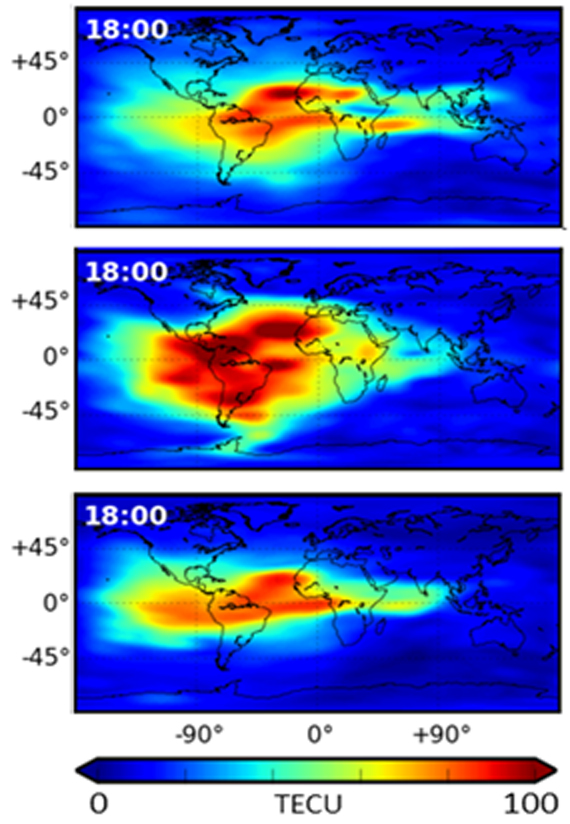Adaptive modeling of the global ionosphere Vertical Total Electron Content

Space weather and natural disaster monitoring, navigation, positioning and other applications imply an increasing need for low latency ionosphere information. In order to create such information, a suitable estimator is required, making use of observation data as soon as they are available. In this sense, the Kalman Filter (KF) is often applied in (ultra) rapid and (near) real-time applications. The requirement of the prior definition of model uncertainties is a drawback associated with the standard implementation of the KF, and the uncertainties can exhibit temporal variations. The implementation of adaptive approaches into the KF is a way to tune the stochastic model parameters during the filter run-time.
In the last years DGFI-TUM developed approaches for modeling the global vertical total electron content (VTEC) of the ionosphere as a series expansion in terms of localizing B-spline basis functions from unevenly distributed input data such as the dual-frequency GNSS measurements of the IGS network. Scientists of DGFI-TUM made now the next step and developed adaptive methods for an ultra-rapid VTEC modelling to tune the associated model uncertainties in a self-learning manner. The adaptive approach relies on the method of Variance Component Estimation (VCE) and significantly reduces the effort to set up the measurement model and the associated uncertainties for different groups of observations. In order to define the dynamic (prediction) model of the ionosphere target parameters, advantages of the B-spline representation are exploited. For instance, since the coefficients of the B-spline representation resemble the VTEC signal, physical interpretations can be directly deduced from the coefficients. This leads to developing the empirical prediction model very efficiently.
The approach is applied to ultra-rapid VTEC modeling employed with a maximum latency of about 2.5 hours using ionosphere measurements from GPS and GLONASS and can be extended for additional GNSS constellations such as GALILEO or other measurement techniques. Details are presented in the article Adaptive Modeling of the Global Ionosphere Vertical Total Electron Content (Remote Sensing, 2020, doi:10.3390/rs12111822, [PDF]).
Arcisstraße 21
80333 München